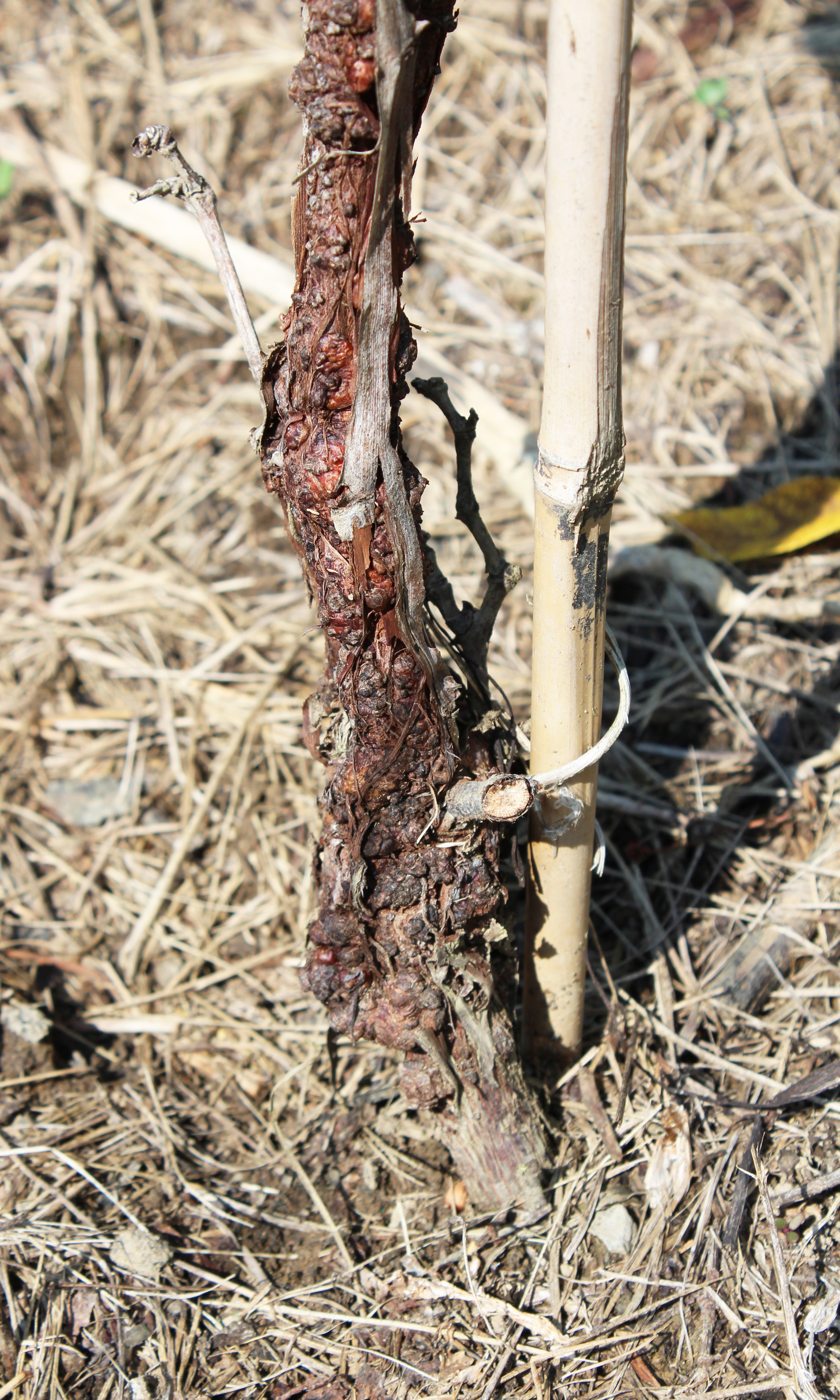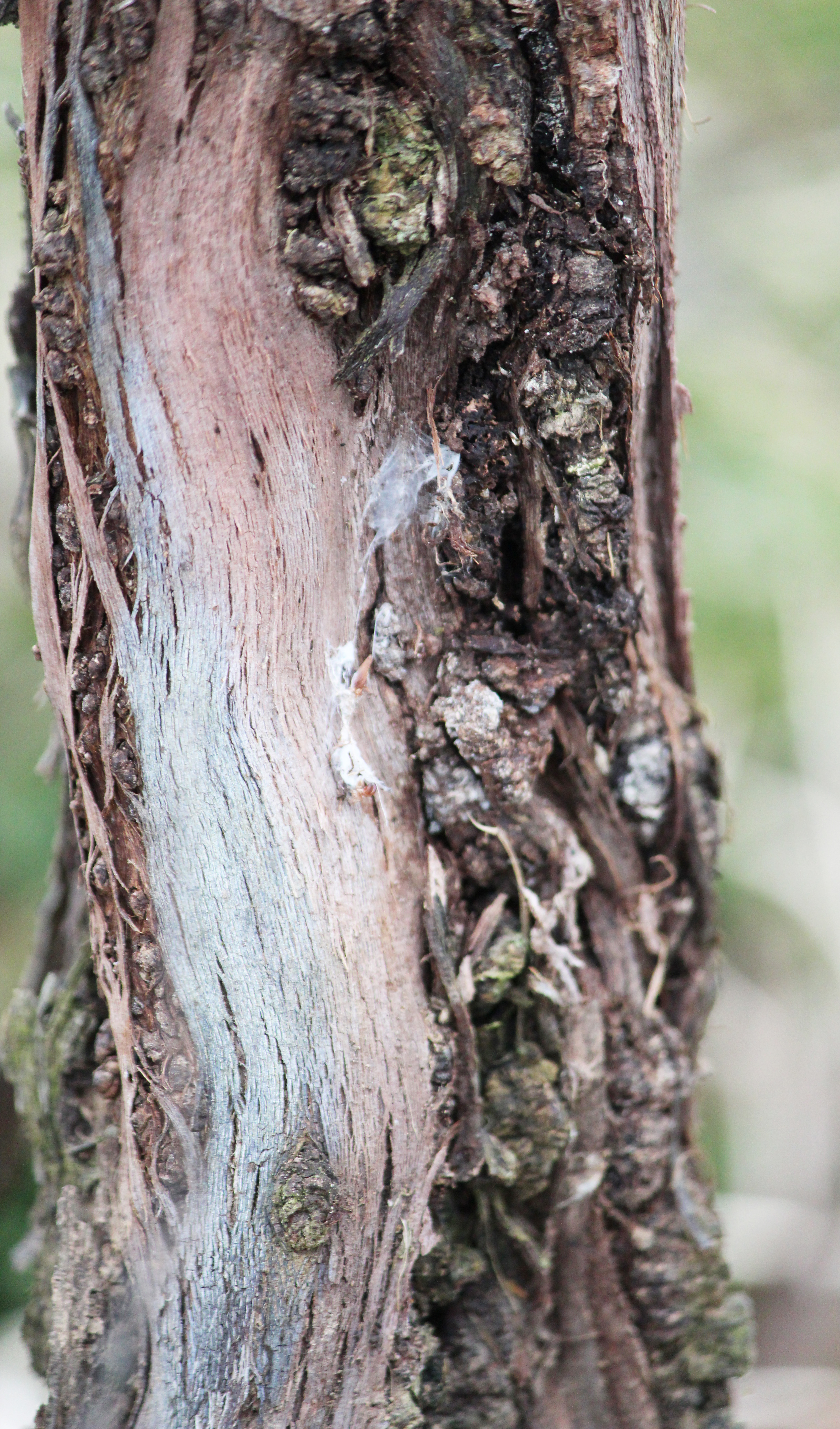Crown Gall of Grapes
Return to Diseases
Crown gall (Rhizobium vitis, syn Agrobacterium vitis, Agrobacterium tumefaciens biovar 3) is a soilborne bacterial disease specific to grape species; this biovar is different from the one that infects other plant hosts. Galls first appear near the soil line as soft white spherical galls that resemble callus tissue. Expanding galls darken and increase in numbers; they girdle trunks, resulting in reduced yields, stunting, dieback, and eventual trunk death. Galls occasionally develop on cordons. Early dieback symptoms may be confused with nutrient deficiency. Infection occurs through injured tissue (e.g., mechanical injury or freeze damage); vigorous plants are often less susceptible to infection. The bacterium spreads from plant to plant through pruning and tillage equipment or through introduction of infected plants. The bacterium survives for 2 or more years in soil in the absence of plant tissue, and it can survive for many years belowground in roots.

Crown gall symptoms on young vine.
(Photo: Nicole Gauthier, University of Kentucky)

Close-up of enlarged galls.
(Photo: Nicole Gauthier, University of Kentucky)
Management:
- Purchase indexed vines; take cuttings only from indexed vines.
- Avoid cold-sensitive cultivars/species.
- Protect plants from freeze.
- Avoid wounding.
- Avoid movement of soil from infested areas of the vineyard to noninfested areas.
- No bactericide has been proven effective for prevention or management.
